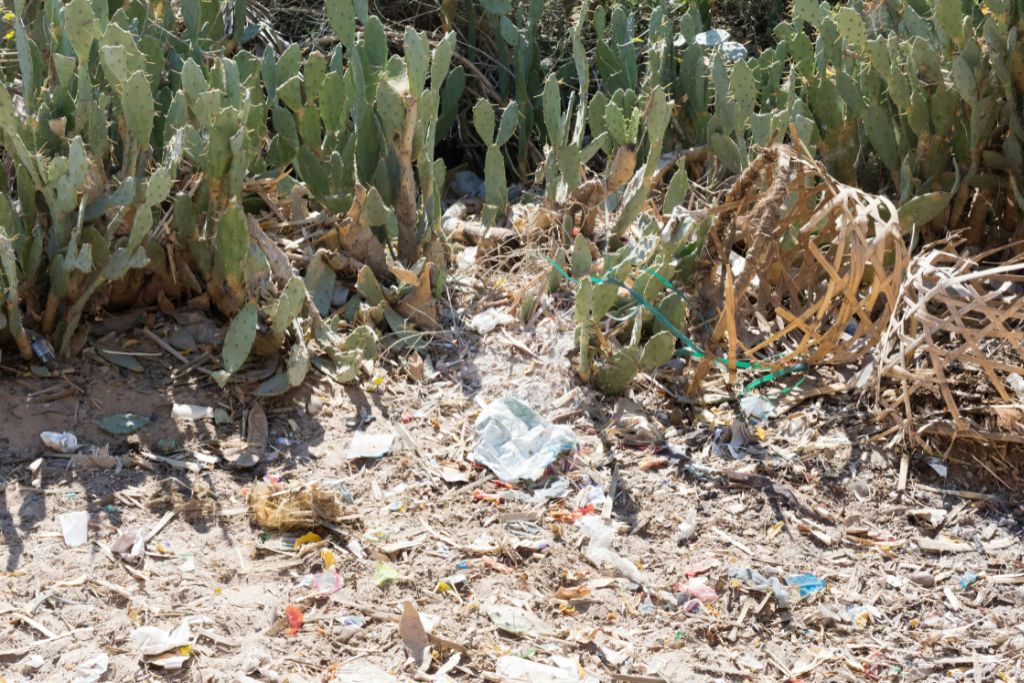While plastic has undoubtedly added convenience to modern living, scientists are highlighting the detrimental effects of plastic on land animals as well as the potential impact on humans. A study on plastic positive mammals raised concerns over the potential impact of plastics on the food chain, urging further study into the topic.
—
Despite mounting evidence of plastic pollution negatively impacting oceans and marine species, people continue to manufacture, utilise, and improperly dispose of plastics at dangerously high rates.
What happens when plastic consumption no longer only harms the environment but becomes a public health threat? New research suggests plastic pollution on land may have even more significant consequences on wildlife and humanity than marine plastic pollution.
Plastic Positive Endangered Species a Growing Concern: Study
While the impact of plastic on marine species has been largely studied, scientists still know little about its impacts on terrestrial ecosystems and animals. New research led to new, important findings, including the most prevalent types of plastic found on land and the distance plastic pollution actually travels.
In a recent study by the University of Sussex, the University of Exeter, and the Mammal Society, scientists analysed 261 fecal samples from seven species, of which 16.5% returned as plastic positive. Four out of the seven species analysed excreted trace levels of microplastics comparable to traces of plastic found in human feces. These species were the European hedgehog, field vole, brown rat, and the wood mouse.
Polyethylene, polynorbornene, and polyester were the most prevalent types of plastics uncovered within the fecal matter, with the latter accounting for 27% of the detected fragments. These highly toxic materials are typically found in single-use packaging, rubber products, and textiles.
Perhaps the most concerning takeaway from the study is the huge risk that plastics pose to the European hedgehog and field vole, a mammal commonly found in grassland, heathland, and moorland habitats. Both animals are classified as ‘endangered’ in the International Union for Conservation of Nature’s Red List for British mammals.
While the research focussed on a limited number of species, the abundance of microplastics in the environment likely affects thousands of other animals, with potentially adverse effects on human health as well.
For instance, the study’s authors believe the four species became “plastic-positive” by eating plastic that they mistook for food or ingesting another plastic-positive prey. Either way, microplastics in the food chain are worth examining, as humans may also be consuming plastic-positive animal protein or vegetation.
You might also like: The Detrimental Impacts of Plastic Pollution on Animals
How Plastic Makes Its Way to the Food Chain
Plastics are everywhere, adding convenience to everyday life. From electronic devices to construction materials, plastics make modern living possible. However, society’s reliance on single-use plastics carries severe environmental and public health implications.
According to the US Environmental Protection Agency, the country generated more than 35.7 million tons of plastic in 2018 – more than anywhere else in the world. Unfortunately, only 8.7% of the plastic waste was recycled correctly that year, while the rest ended up in landfills or dispersed in the environment, threatening already fragile ecosystems.
You might also like: 8 Shocking Plastic Pollution Statistics to Know About
A significant problem with plastic pollution is how long certain products take to biodegrade. For instance, it could be 20 years before plastic grocery bags decompose, while the lifecycle for plastic straws and water bottles is about 200 and 450 years, respectively. Over time, plastic pollution breaks down into microplastics – tiny particles that contaminate food, air, drinking water, and soils – which can threaten human health.
One example is polyvinyl chloride (PVC). Found in the packaging of fruit juices and cooking oils, this type of plastic contains toxic chemicals like metals, dioxins, bisphenol A (BPA), and phthalates. Although PVC in consumer products decreased in recent years, studies have shown it can cause severe health conditions, such as birth and genetic defects, cancer, ulcers, liver disease, and chronic bronchitis.
Considering microplastic’s impacts on human health, it comes as no surprise that plastics have dire effects on the natural world. Terrestrial plastic pollution is approximately four to 23 times higher than marine plastic pollution, with about one-third seeping into soil and freshwater resources. In turn, plastics negatively alter soil properties hindering plant growth and entering the food chain by contaminating crops.
What You Can Do to Prevent a Plastic Positive Environment
As the Covid19 pandemic led to global lockdowns and brought life to a screeching halt, the world experienced a 2.2% reduction in plastic pollution – despite an uptick in food packaging and medical waste.
You might also like: Another Side Effect of COVID-19: The Surge in Plastic Pollution
There is no doubt that health mandates and the work-from-home culture had something to do with the dip in plastic waste. Workplace behaviours usually entail grabbing coffee on the go, ordering takeout at lunch, and stopping for groceries on the way home. Without the work commute, more people were inclined to reuse and recycle plastic goods at home.
Unfortunately, plastic consumption increased again as soon as global economies started reopening in 2021, according to a report by the Organisation for Economic Co-operation and Development (OECD).
Yet, it is not all bad news. Studies found that there is still potential for some of these positive behaviours to continue post-pandemic. For instance, 54% of companies intend to keep remote work a permanent feature of the workplace – meaning individuals can maintain their less-plastic and plastic-free habits in the future.
Some ways you can reduce your plastic waste at home or heading out the door include:
- Bring a reusable bottle or coffee mug from home.
- Remember to pack reusable bags for grocery shopping.
- Reuse food containers.
- Give up gum, which is made of a non-biodegradable synthetic rubber called polyisobutylene. One study suggests that gum accounts for 250,000 pounds of waste in our overflowing landfills.
- Avoid purchasing food that comes wrapped, boxed, or placed in another type of plastic packaging.
- Opt for items made with biodegradable materials.
- Avoid using plastic utensils at home.
- Try to DIY certain goods to reduce bottles and packaging.
Many people struggle to build good recycling habits because they are unaware of what is and is not recyclable. Conduct research to educate yourself regarding your town’s recycling rules and regulations for further guidance.
Municipalities must also ramp up their educational resources, incentives, and enforcement to boost consumer recycling behaviours. In cities like Austin and Seattle – where residents have free recycling but pay-as-you-go rules for landfilling – recycling rates are 10 to 20 times higher than in Chicago and Charlotte.
Less Plastic Means Healthier Animals and Humans
The recent study regarding plastic-positive mammals is eye-opening and demonstrates how global plastic consumption is out of control, impacting every species – including humans. Changing society’s behaviours is critical to saving endangered species and safeguarding public health.
You might also like: We Need Sustainable Packaging Now. Here’s Why.


















